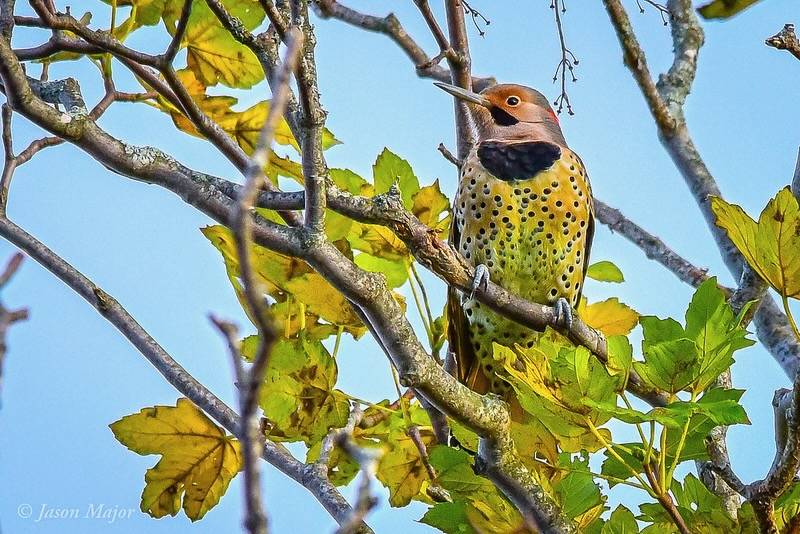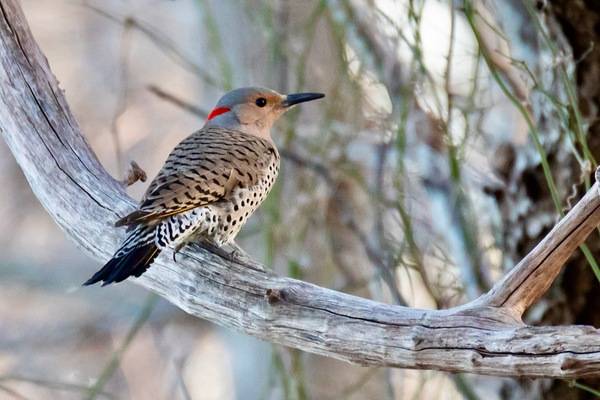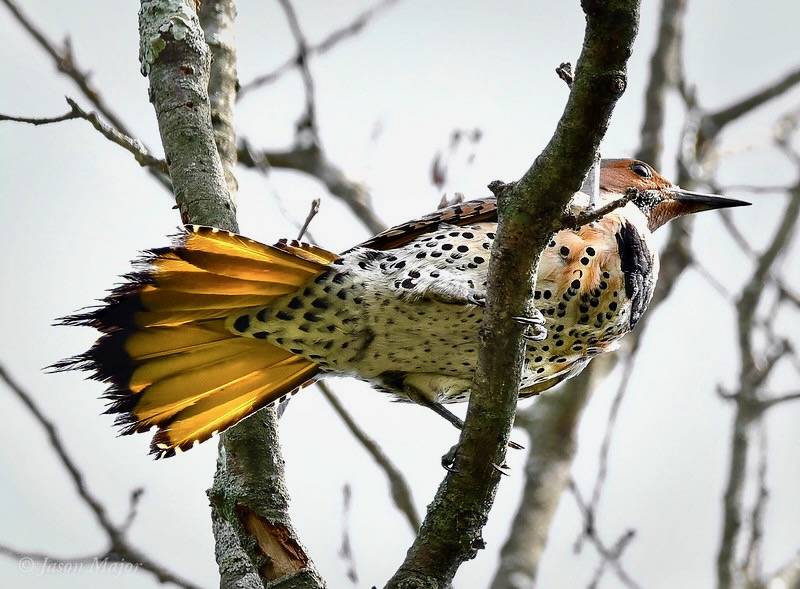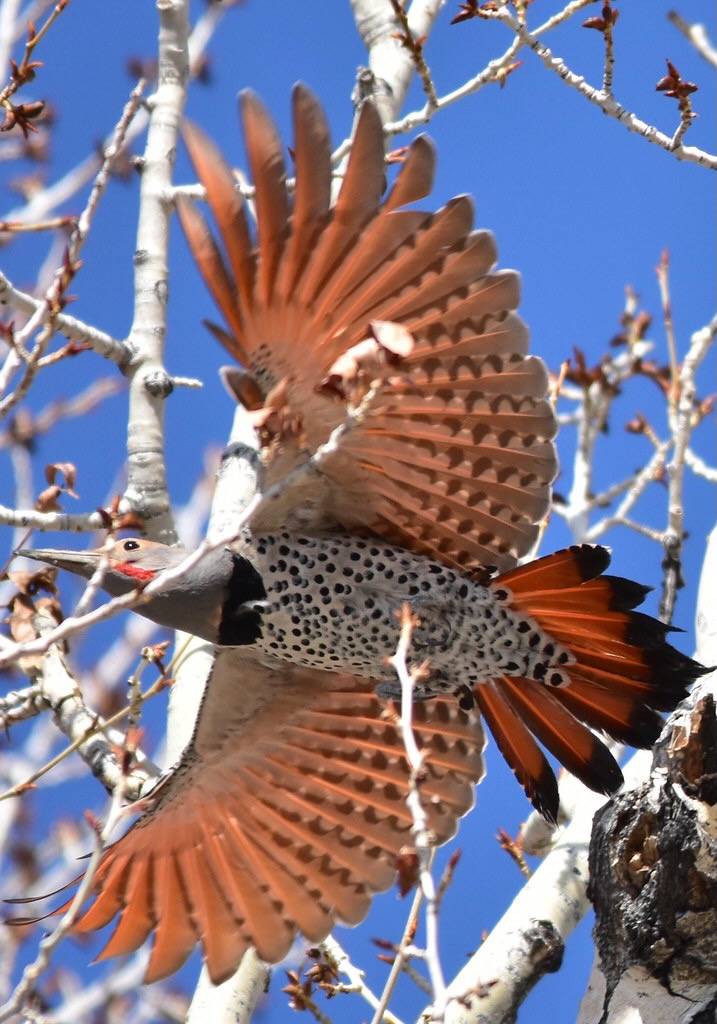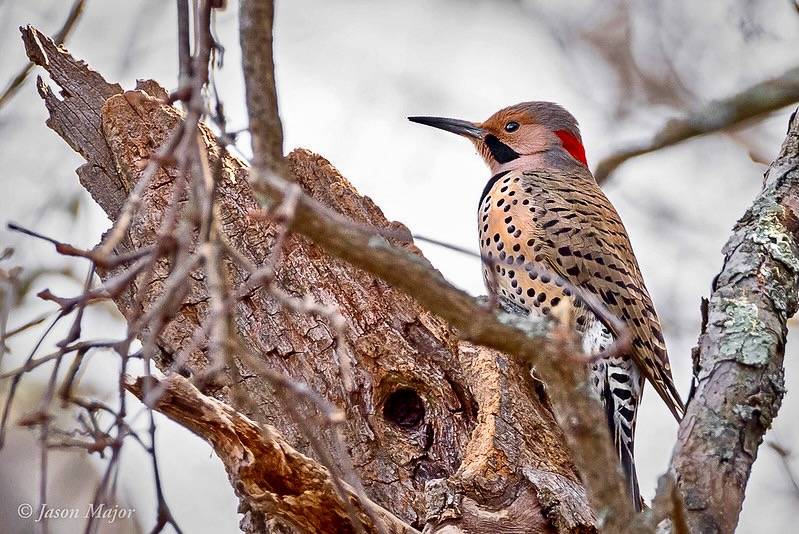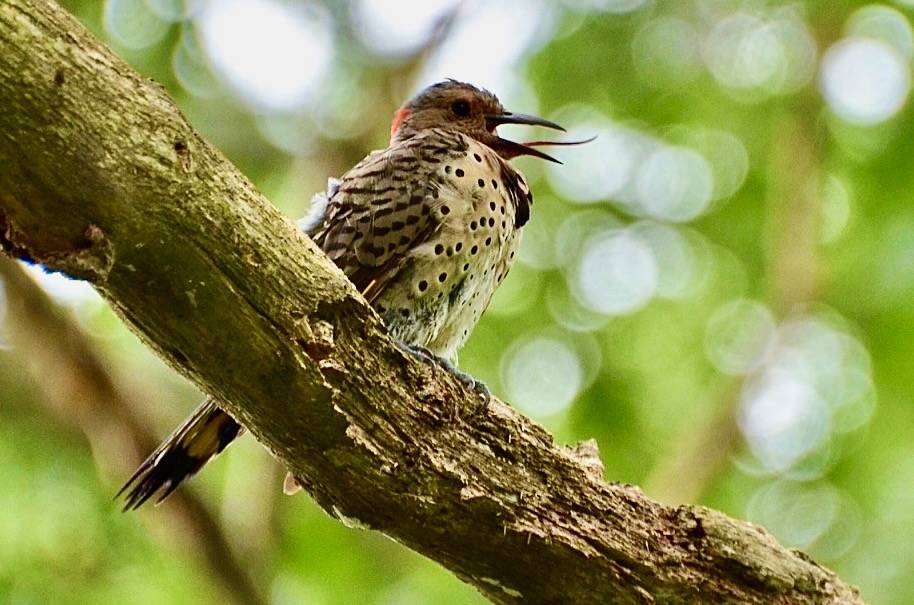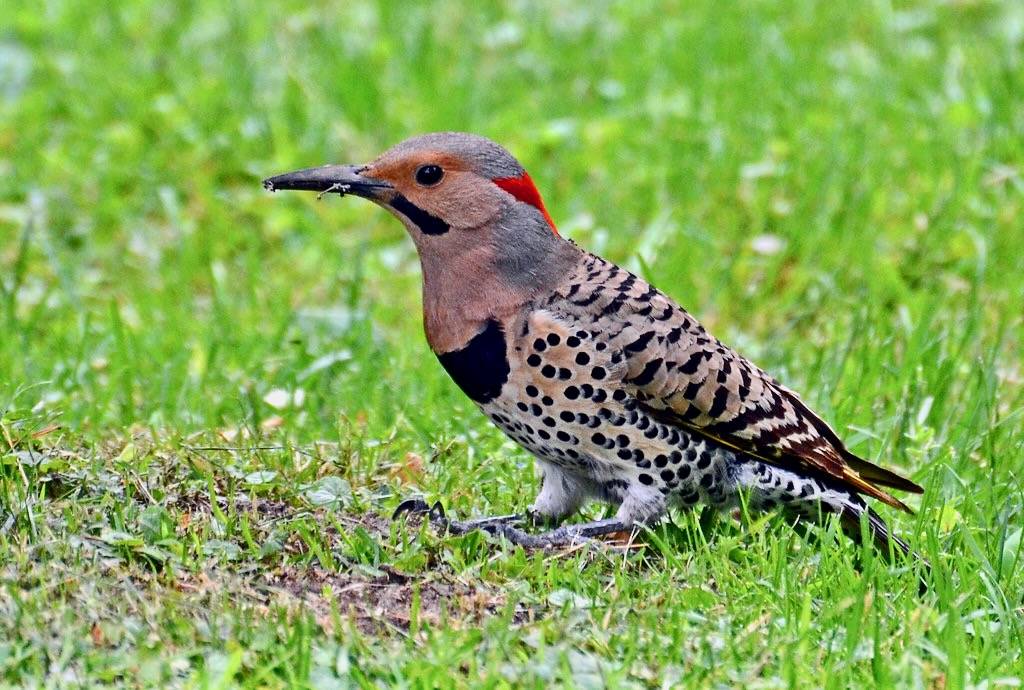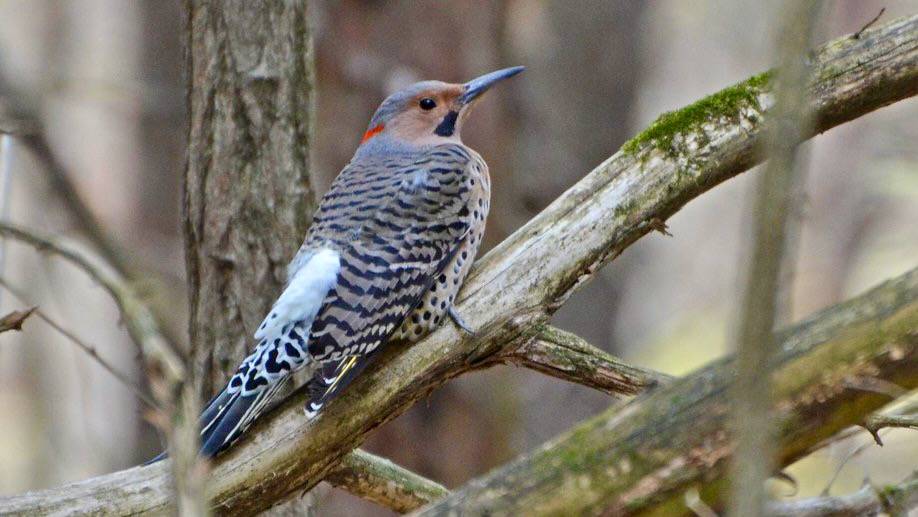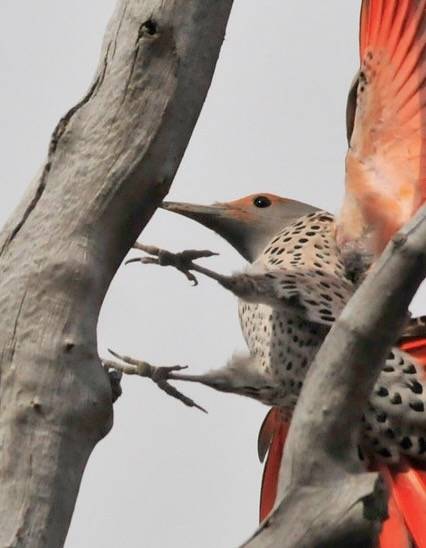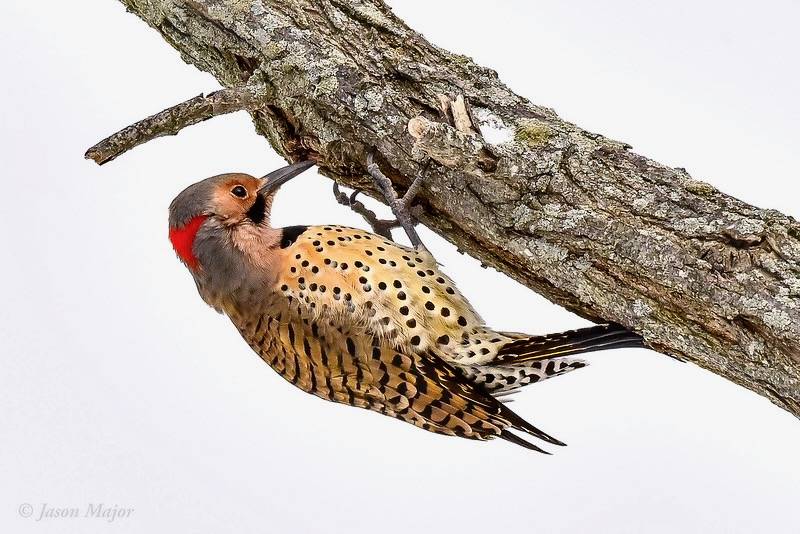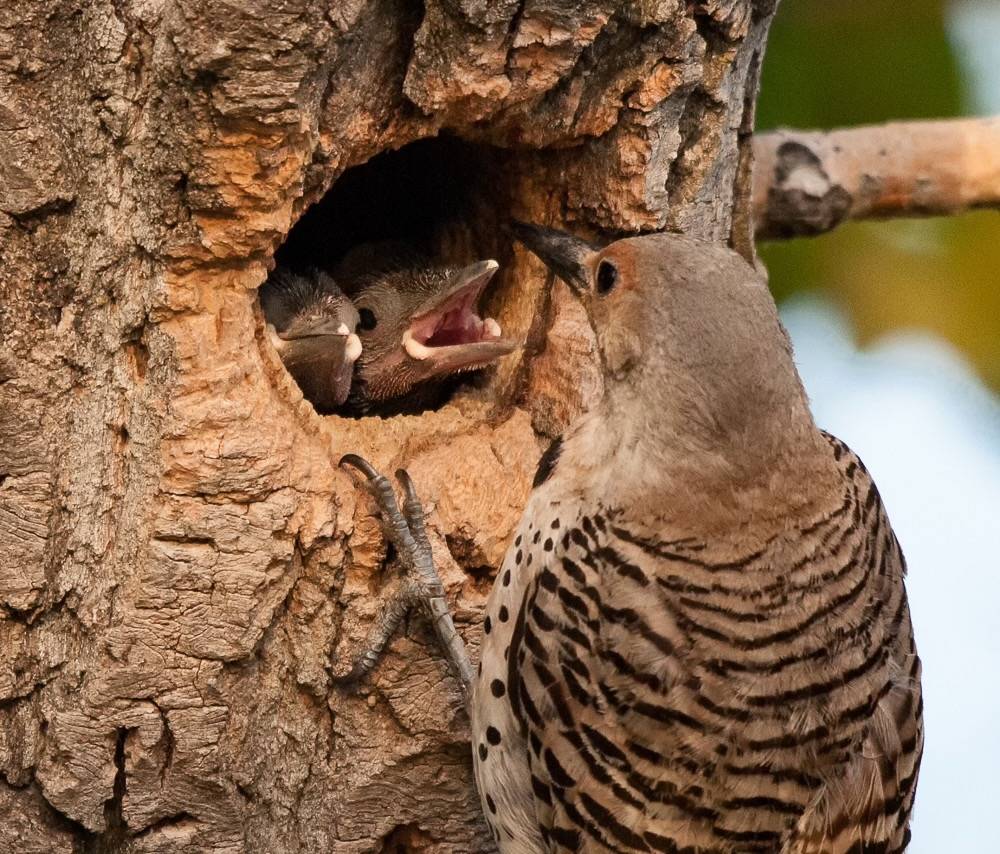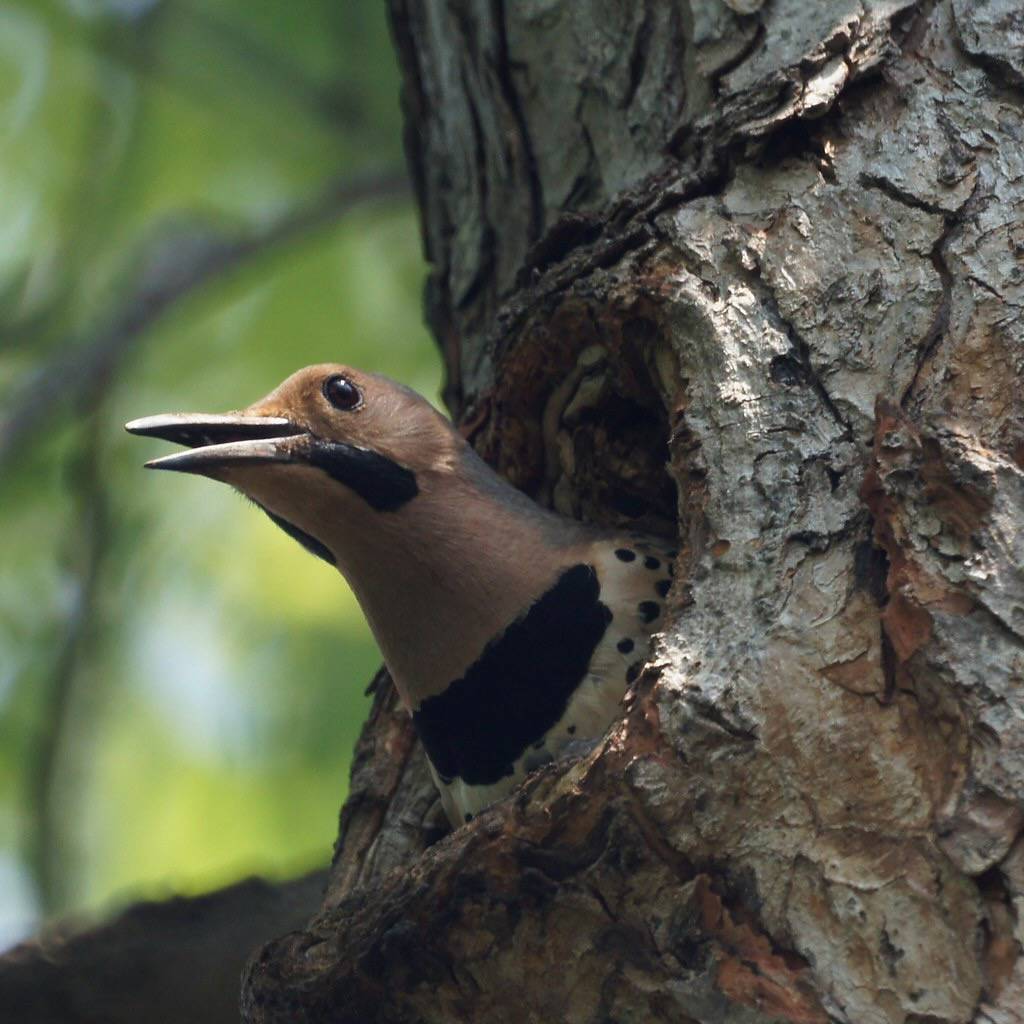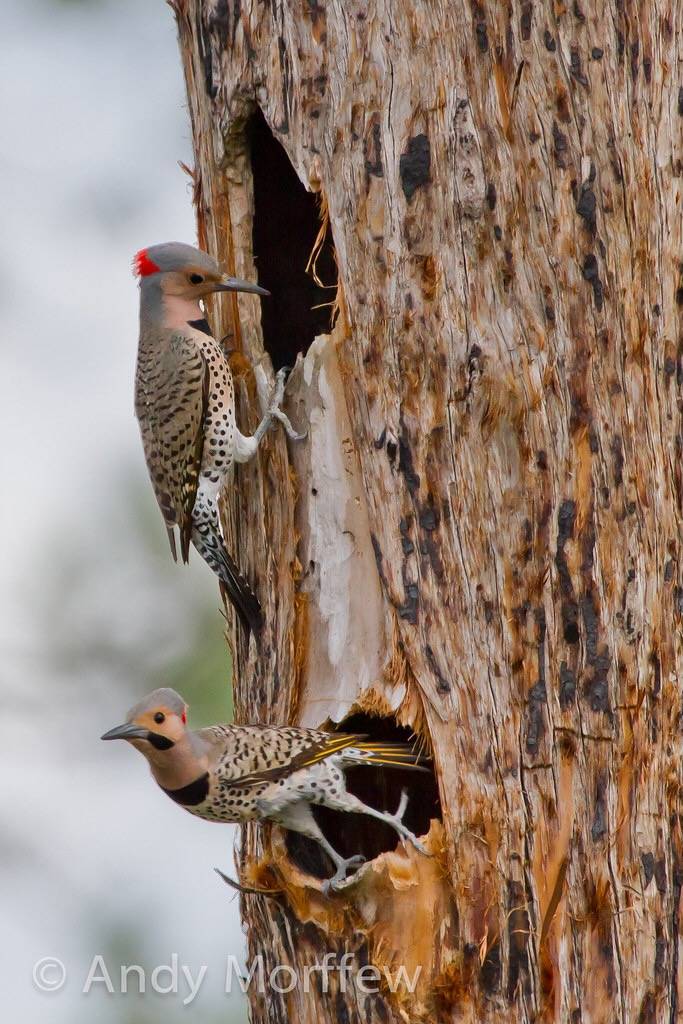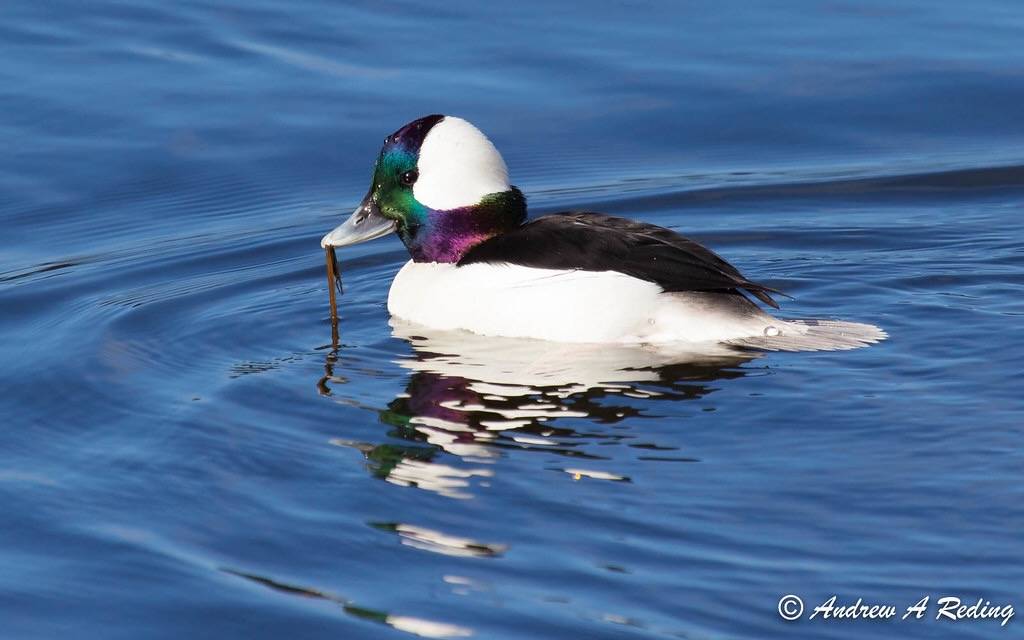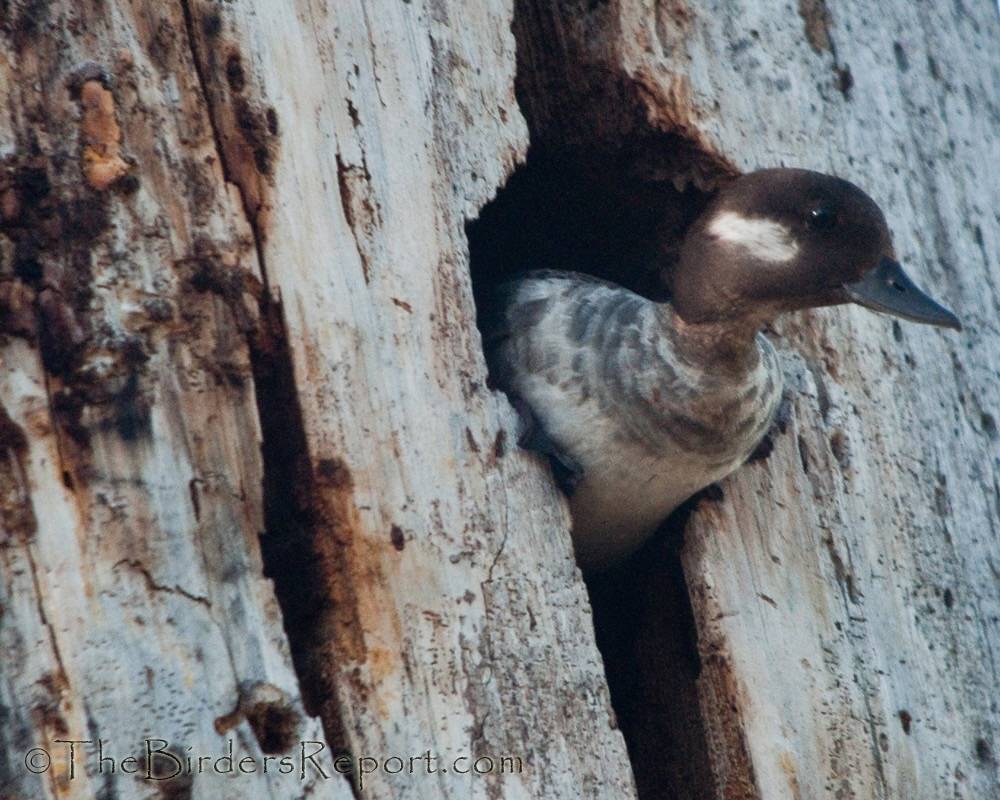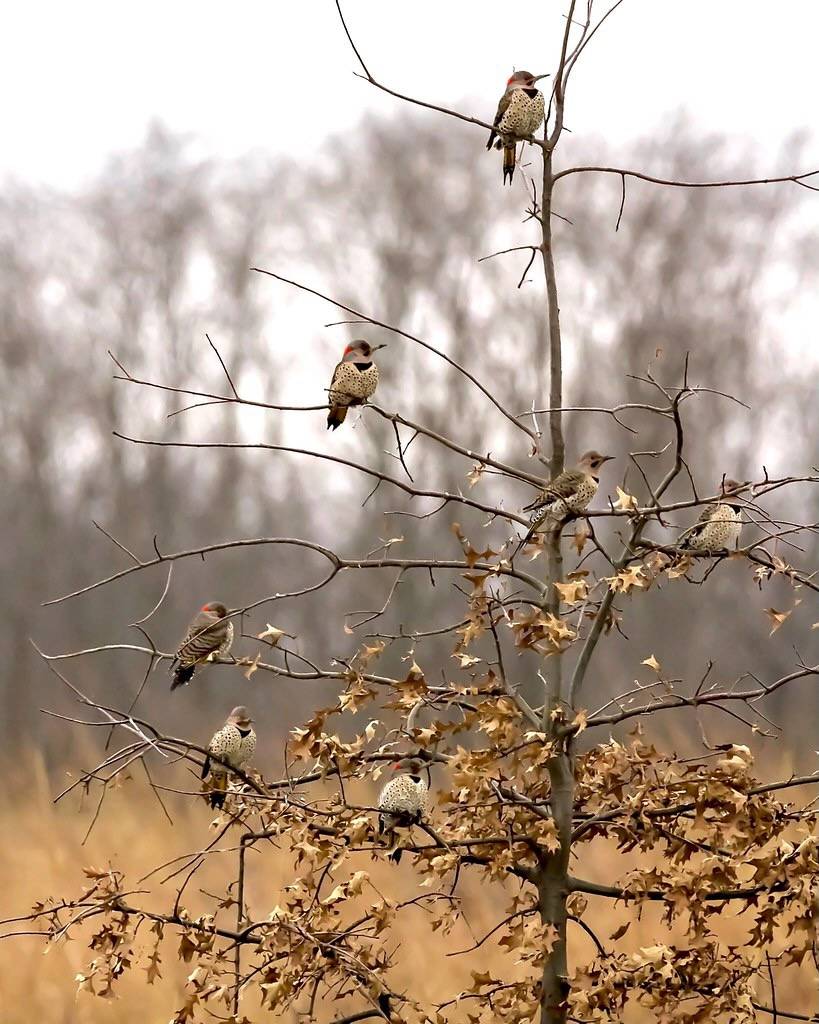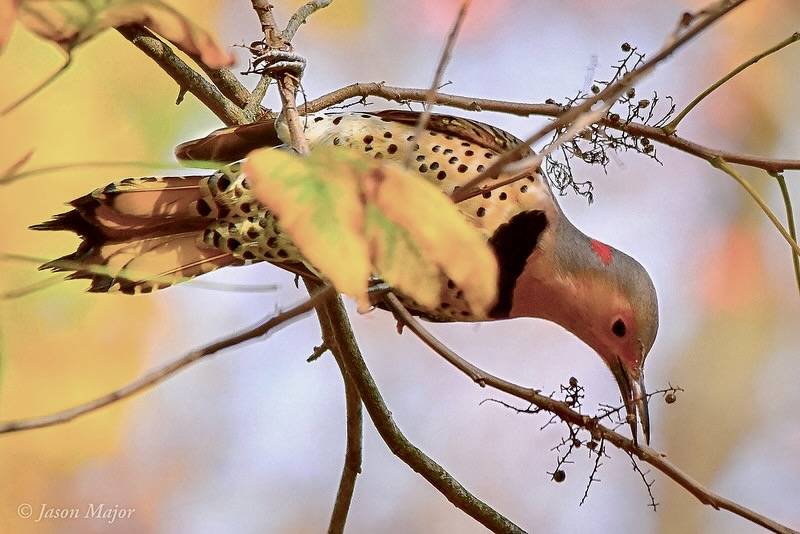Northern Flicker
The Northern Flicker probably does not breed at Salter Grove because decaying dead trees suitable for nest sites are absent in the park. However, single birds or small groups have been recorded most weeks of the year. These visiting individuals likely either nest in woods not too far from the park or are migrating through. It is the only woodpecker species known to migrate any great distance.
Even when the bird is not visible, its resounding keeeer-keeer-keeer, or wika-wika-wika calls can be heard throughout the park. It is seen most often when birds foraging on the lawn are flushed by strolling human visitors. A medium-sized brownish bird with a prominent white rump flying up from the ground is bound to be a Northern Flicker. Unlike the other woodpeckers that commonly occur at Salter Grove, such as the Downy Woodpecker and the Red-bellied Woodpecker, the Northern Flicker mostly forages on the ground.
The Northern Flicker has a long tongue that can extend two inches beyond the tip of the beak allowing it to go after insects sheltering deep in crevices of decayed wood or in the ground. It is omnivorous and consumes a variety of insects, berries, and fruits. Not only are ants important in the flicker's diet (comprising up to 45%) but they are also used in preening plumage, a behavior called "anting" that has also been observed in other birds. It is thought that the formic acid contained in ants kills the vermin infesting feathers.
It breeds across most of North America and parts of Central America in wooded areas with standing dead trees. This widespread species has over 100 common names. Northernmost birds are noticeably larger than birds in the southern limits of its range. There is also striking geographic difference in the plumage of this widespread species. Birds living in eastern states have yellow-shafted feathers and males have black mustaches. In contrast, the birds in western states have red shafted feathers and males have red mustaches.
Like other woodpeckers, the Northern Flicker nests in tree holes. Either new cavities are excavated in decaying wood or the nests of other hole-nesting birds are repurposed. In turn, its nest is sought after by the Bufflehead, a tree-nesting duck that breeds in the boreal woods of northern North America and is a regular winter resident at Salter Grove.

